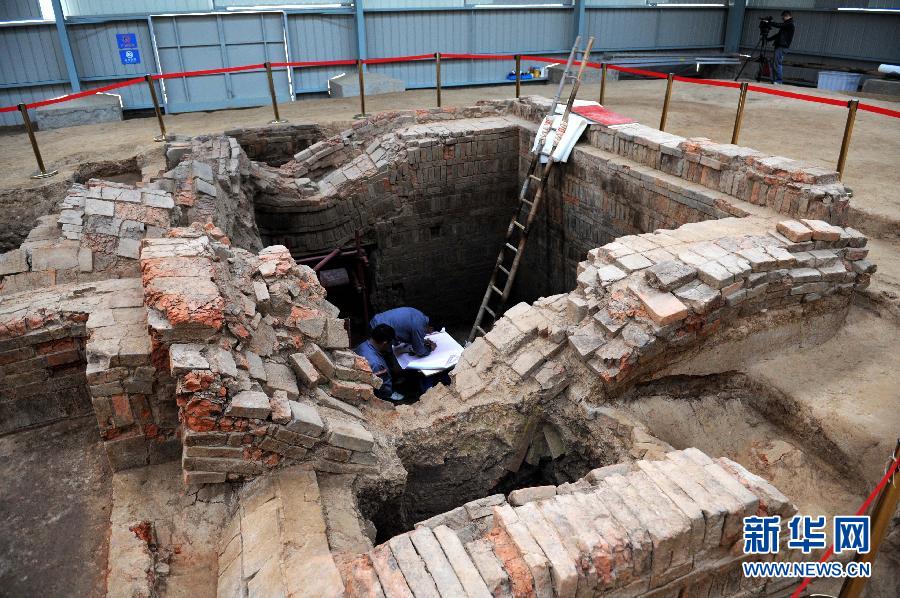Seven months ago a surprise find at a construction site in Yangzhou in east China was thought to be the tomb of Emperor Yang from the Sui Dynasty. Now after months of work, experts have verified that two tombs found in the area are that of Emperor Yang and his wife.
A stone tablet with the name of Emperor Yang inscribed into it led to a seven-month long research project considering its authenticity. Now archaeologists have concluded that the two brick tombs are indeed of Emperor Yang, the second emperor of the Sui Dynasty and his wife, buried some 1,500 years ago.
 |
|
Chinese archaeologists confirmed on Saturday at a press conference that the ancient tombs discovered earlier this year in Yangzhou, Jiangsu Province are the final resting place of Emperor Yang and Empress Xiao of Sui Dynasty (581-618). In addition to a large number of burial objects, two male teeth and a female's skeletal remains were unearthed. [Photo/Xinhua]
|
Other clues experts were using included female bone remains in one tomb, along with relics found in both tombs such as a bronze door knocker, a jade waist belt, a bronze chime bell and some pottery figurines.
For two hundred years experts had believed the tomb of emperor Yang lay elsewhere in the region, a site which has since become a tourist hotspot, and is five kilometres away from the current verified site.
The fact that the location of the tomb has been a mystery for so long might relate to that fact that the emperor was killed in a coup - a disgraced ending for an emperor.
Although the Grand Canal, the ancient waterway linking Beijing and Hangzhou, was commissioned by him, Emperor Yang is considered by many to be one of the worst tyrants in Chinese history. The leader left the empire bankrupt and the people in revolt. He was eventually strangled in a coup led by one of his generals at the age of 49.
We recommend:
